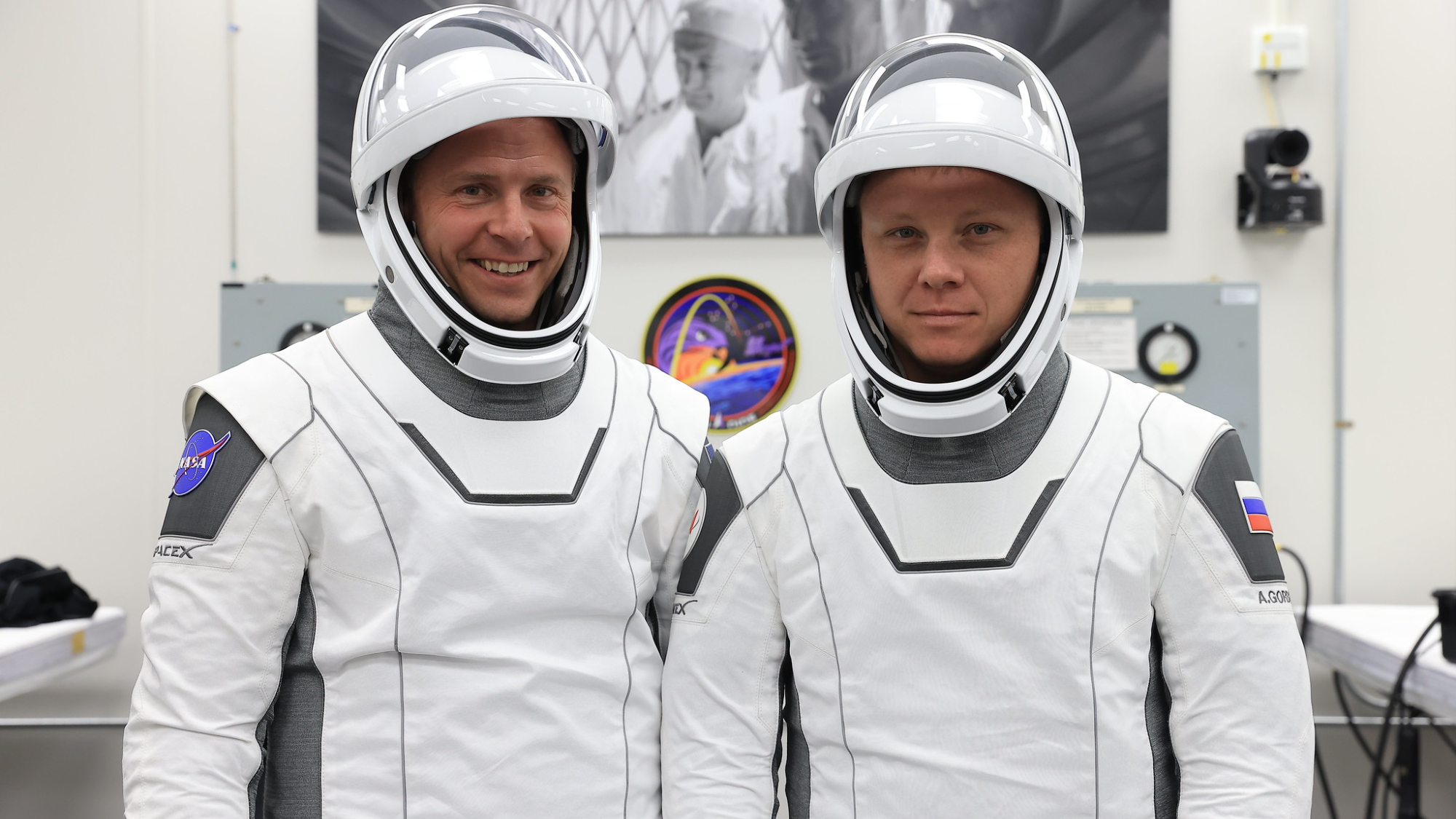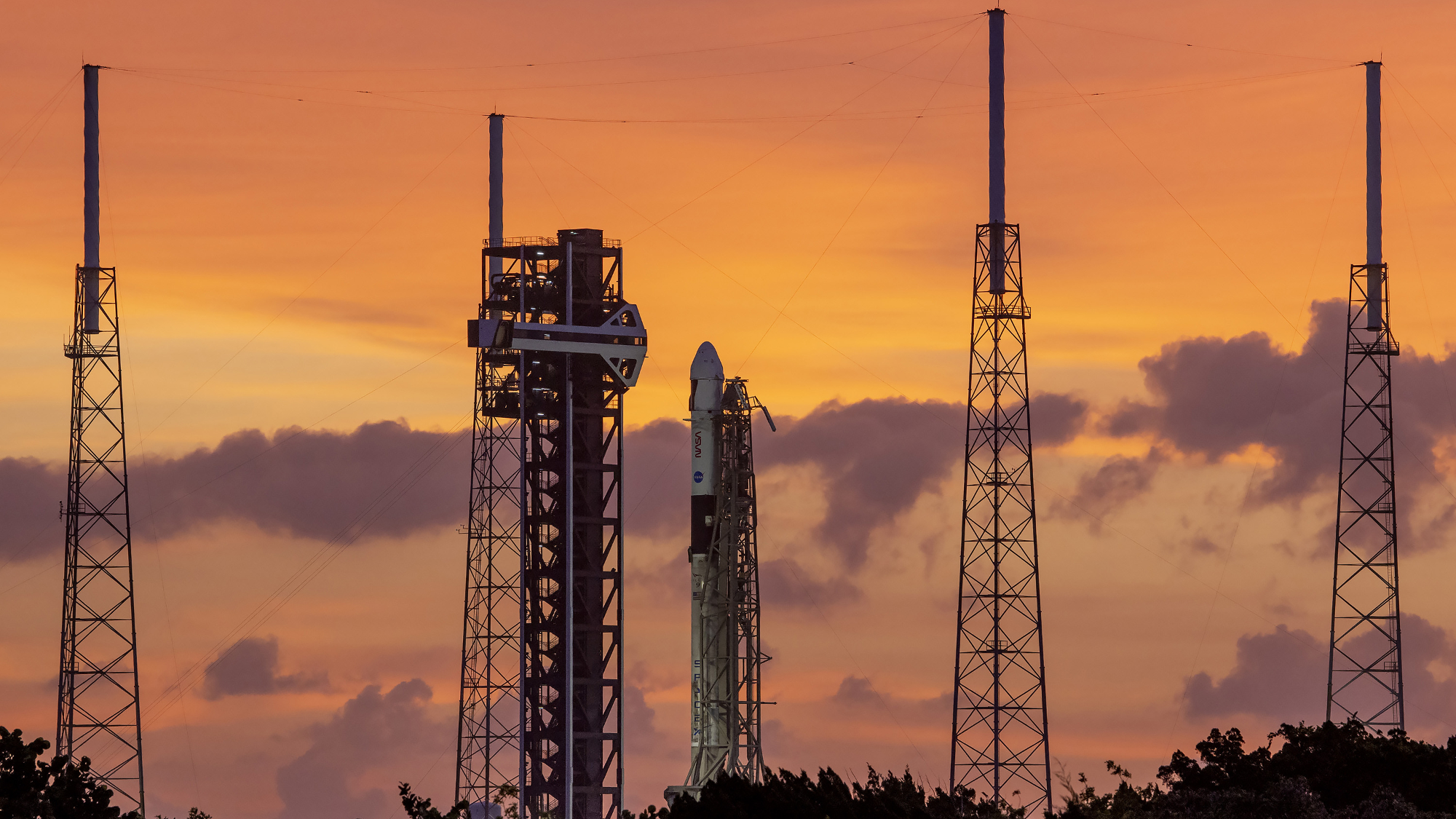NASA has cleared its next astronaut flight to the International Space Station for launch on Friday (September 27), a weekend launch that will help return two Boeing Starliner astronauts home and break ground on a new launch pad for SpaceX.
A SpaceX Falcon 9 rocket and Dragon spacecraft will launch two Crew-9 astronauts, NASA veteran Nick Haag and Russian cosmonaut Alexandr Gorbunov, to the ISS from Cape Canaveral Space Force Station in Florida on Saturday, September 28. The launch is scheduled for 1:50 PM EDT (1517 GMT).
“We’re moving toward launch and will continue tomorrow at 1:17 p.m.,” Steve Stich, NASA’s Commercial Crew Program manager, told reporters at a news conference Friday evening. “We are standing vertically on the platform and the next big activity is loading the cargo here this afternoon and getting it ready for flight.” You can watch the Crew-9 launch live on Space.com, courtesy of NASA and SpaceX, starting at 9:10 a.m. EDT (1310 GMT). You can also watch the launch on NASA’s YouTube, NASA+ streaming channel and SpaceX’s X page.
SpaceX’s Crew-9 mission is a break from typical ISS crew rotation flights for NASA in a number of ways.
First, there’s crew size.
A half-dragon crew

For the first time since a test flight in May 2020, SpaceX is launching just two astronauts to the ISS on a Dragon spacecraft. That’s because NASA pulled two other crew members — original commander Zena Cardman and three-time shuttle pilot Stephanie Wilson — from the flight to make room for two astronauts who have been stuck on the ISS since their Boeing Starliner capsule returned to Earth without them. on September 7.
NASA astronauts Butch Wilmore and Sunita Williams launched to the station in June in the first-ever crewed test flight of Boeing’s Starliner spacecraft. But concerns about Starliner’s thrust system prompted NASA to keep Wilmore and Williams on the ISS and return Starliner home unmanned. Their original eight-day mission turned into a full eight-month spaceflight. This month, Williams even took command of the station’s current Expedition 72 crew as she and Wilmore awaited a trip home on Crew-9’s Dragon capsule in February 2025.
To accommodate the return of the Starliner astronauts, Cardman and Wilson had to give up their seats and put aside years of training for their Crew-9 flight, which The Hague now commands. NASA has outfitted the two empty Crew-9 seats with additional cargo and supplies, including a new Dragon spacesuit for Wilmore (one for Williams is already aboard the ISS).
“I just want you to know that we’re going to find places where they can fly,” Ken Bowersox, NASA’s associate administrator for space operations and a former astronaut, said of Cardman and Wilson. “And we really appreciate how hard it is to give up on a mission and wait a little bit longer.”
Also new for the Crew-9 flight is SpaceX’s choice of a launch pad.
Related: Astronauts, capsule for SpaceX’s Crew-9 arrive at launch site (Photos)
SpaceX’s new astronaut platform

To date, SpaceX has launched every astronaut mission for NASA from the Kennedy Space Center’s historic Launch Complex 39A, where Apollo and Space Shuttle launches took place before SpaceX leased it from the US agency. However, SpaceX also launches unmanned missions from its Space Launch Complex-40 platform at Cape Canaveral Space Force Station, which is located near the Kennedy Space Center.
According to the Cape Canaveral Space Museum, the pad was formerly used by the U.S. Air Force for Titan rocket launches from 1965 to 2005. In 1996, it was used to launch a Titan 3C rocket carrying the Manned Orbiting Laboratory military space station mockup and a Gemini capsule (with no crew on board), according to NASA.
The SLC-40 pad, recently upgraded to host astronaut launches, now features a crew access tower and arm, a parachute-based pad escape system to whisk crews away in case of danger and should function much the same as SpaceX’s Pad 39A location. It also means more flexibility for SpaceX.
“I think operating from Pad 40 gives us a lot of unique opportunities that we can take advantage of,” Bill Gerstenmaier, SpaceX vice president for construction and flight reliability, told reporters.
Having a second launch pad that can accommodate the crew gives SpaceX breathing room to tackle complicated launches at both Florida launch sites. The company is currently preparing Pad 39A to launch a Falcon Heavy rocket with three boosters on October 10 that will carry NASA’s flagship Europa Clipper mission to Jupiter’s moon Europa. Without a second, crew-certified pad, SpaceX wouldn’t be able to perform both missions, Gerstenmaier says. said.
Related: How to watch SpaceX’s Crew-9 astronaut launch for NASA
“It also allows us to place two crew missions quite close together, back-to-back, and see where we are if we need to,” he added. “So I think it’s helpful to have a backup option, or if something happens to a pad, or if there’s damage to a pad, or if we need to remove a pad for maintenance.”
SpaceX and NASA previously targeted September 26 to launch the Crew-9 mission, but postponed it until September 28 due to bad weather from Hurricane Helene, which made landfall on Florida’s Gulf Coast during what was the original launch of the mission would have been day. That storm’s rainy fallout on Florida’s Space Coast (on the other side of the state) was tropical storm-class wind and rain, NASA officials said.
SpaceX had to clean and repaint part of the Dragon capsule after wind blew soot during a standard engine test into the capsule earlier this week. That cleaning ensured that the capsules’ radiators and solar panels will function properly during flight, NASA said.
Currently, Space Force weather officials are predicting a 55% chance of good weather on Saturday for Crew-9’s launch. These conditions improve to 60% “go” on backup day Sunday (September 29). If necessary, another backup launch day is available on Monday (Sept. 30), NASA officials said.
Editor’s note: Tune in to Space.com Saturday, September 28, to watch SpaceX’s Crew-9 astronaut launch for NASA. The launch webcast begins at 9:10 a.m. EDT (1310 GMT). A post-launch press conference is scheduled for 3:00 PM EDT (7:00 PM GMT).



